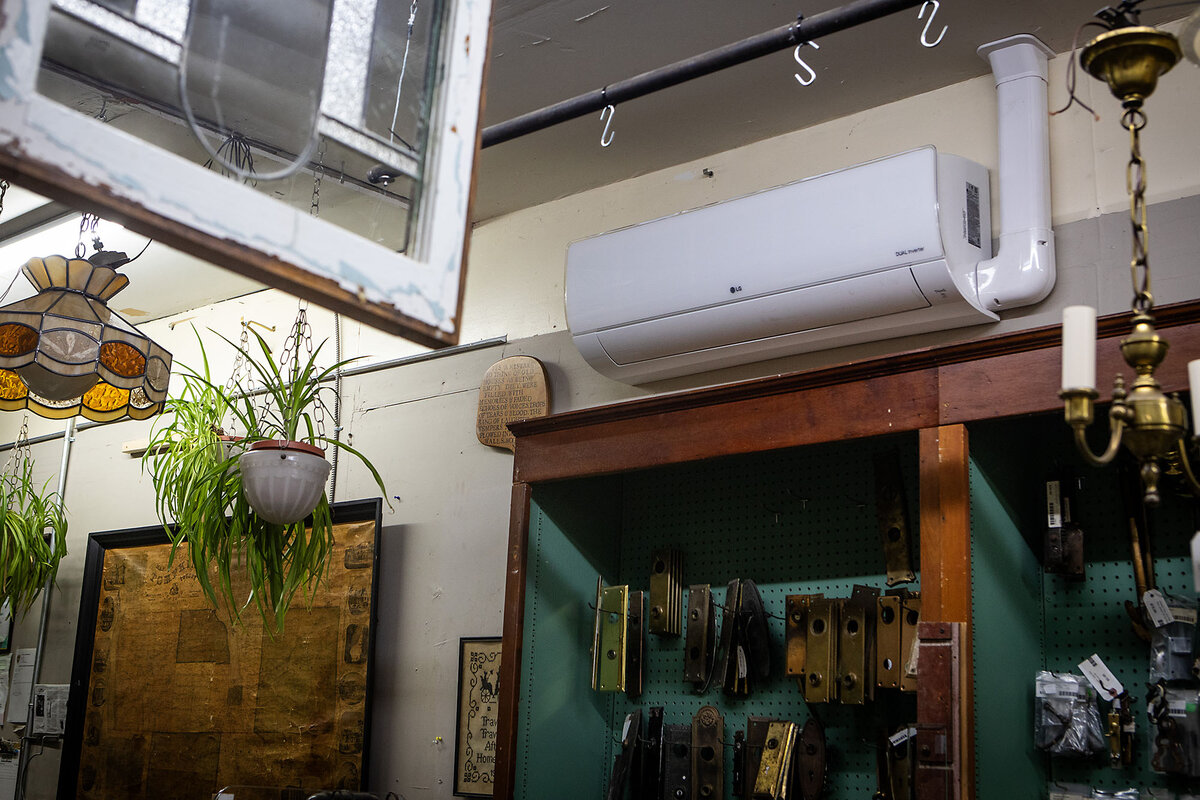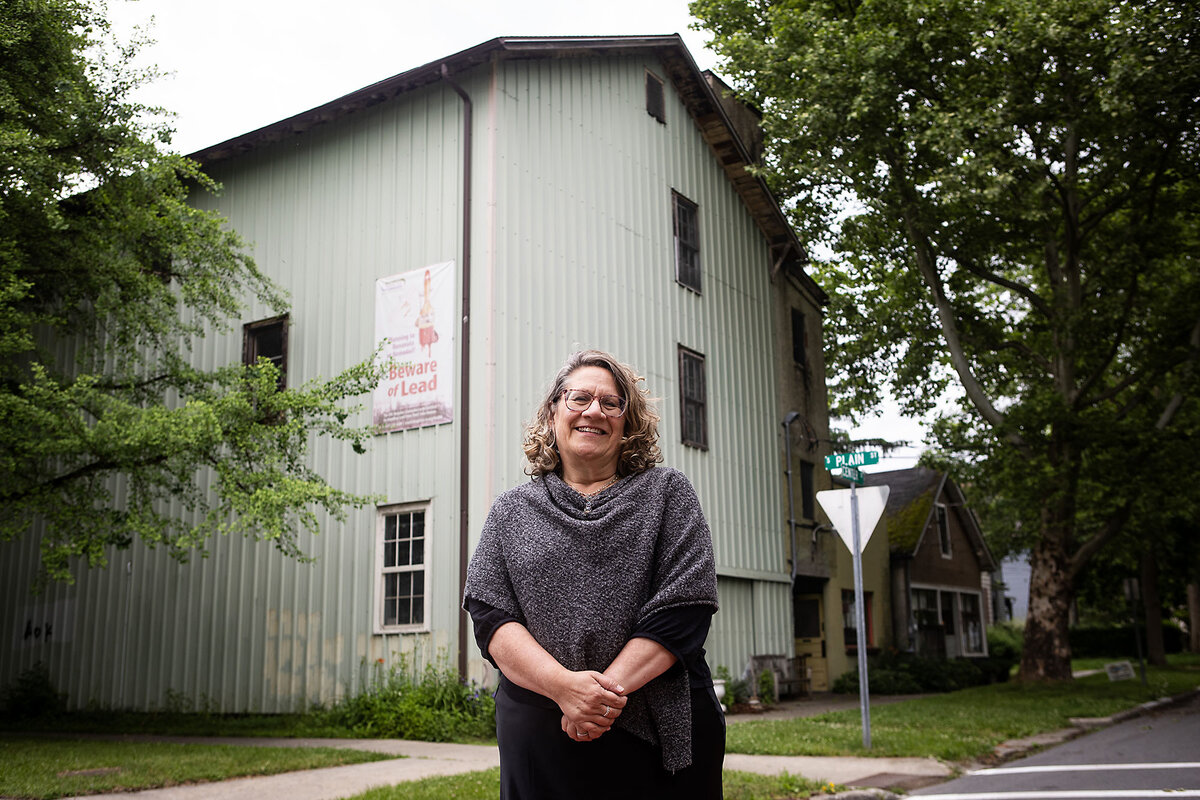Ithaca, New York, set ‘totally crazy’ climate goals. Here’s what happened next.
Loading...
| Ithaca, N.Y.
In June 2019, the city of Ithaca, New York, announced a shockingly ambitious climate goal: It pledged to become carbon neutral by 2030, a timeline officials described as faster than that of any other municipality in the country.
Officials called this commitment the Ithaca Green New Deal, a nod to the federal resolution released to much fanfare earlier that year by Rep. Alexandria Ocasio-Cortez of New York and Sen. Edward Markey of Massachusetts, both Democrats. The scope was big.
Not only would the city develop wide-scale solar energy and take its building stock off fossil fuels, it would reduce greenhouse gas emissions in the food and transportation sectors, electrify its vehicle fleet by 2025, and build out public charging networks. All the while, city officials pledged, they would ensure that lower-income residents of this Finger Lakes city would benefit just as much as the wealthier population.
Why We Wrote This
A story focused onIthaca, New York, set one of the most ambitious climate goals in the United States in 2019. Since then, the city has learned how to press on when faced with setbacks.
“In layman’s terms,” says Rebecca Evans, Ithaca’s current sustainability director, “it was totally, totally crazy.”
Sure enough, these lofty goals have been difficult to meet. According to the Ithaca Green New Deal Scorecard, maintained by a local group of climate advocates, many of the promises, such as decarbonizing the electric grid and establishing a curbside food scrap pickup service, have stalled.
But if Ithaca’s movement to zero emissions has been far slower than pledged, there’s also another part of the story, government and climate activists say. Even with a global pandemic, a change in city government leadership, and the crushing reality of how much it actually costs to move a city away from fossil fuels, this community hugging the southern tip of Cayuga Lake is crawling toward its climate goals – and motivating other smaller cities across the country to do the same.
“It’s a catalyst for hope,” Ms. Evans says.
Ithaca, some environmental advocates say, shows how smaller towns and cities are increasingly instrumental in developing the most practical climate solutions – as well as identifying those places where deep systemic roadblocks exist and need attention.
“Smaller cities can be living laboratories in a way that larger cities can’t,” says McKenzie Jones, resilience hub director for the Urban Sustainability Directors Network. “In smaller cities, you can be more nimble. You can do really interesting, equity-centered climate work.”
On the leading edge of change
The City of Ithaca has a population of around 33,000, while the surrounding Town of Ithaca has an additional 20,000 or so. Home to both Ithaca College and Cornell University, the region is known for both an intellectual bent and a willingness to use that academic prowess for environmental action.
“Ithaca is a town that has a lot of history of being on the leading edge of progressive change in the state,” says Lisa Marshall, advocacy and organizing director at New Yorkers for Clean Power.
Ms. Marshall worked for years in surrounding Tompkins County to replace fossil-fuel-based heating sources with electric heat pumps. She recalls that in the late 2010s, a group of younger local climate activists joined forces with some of the old-guard environmentalists who had long lobbied for climate action in the city. They began pressuring city officials on social media, demanding big, sweeping action.
They eventually got the Green New Deal. But while people were excited about the idea, Ms. Marshall and others recall, there were a lot of questions about what, exactly, came next.
“I don’t necessarily think the Council at the time really understood what it was going to take to get to zero by 2030,” says Ms. Evans. “We’re talking an unprecedented amount of money, an unprecedented culture shift. It’s very, very, very hard.”
But there are always reasons not to attempt big change, she says. And with bold commitments and fast-approaching deadlines, she says, officials here recognized that they needed to take a more startup approach, trying out solutions and then adjusting as needed. Should they get air scrubbers to suck carbon dioxide out of the atmosphere around town? Buy heat pumps for all residents? Those were the sort of proposals that people here needed to consider – even if, for various reasons, they didn’t end up being possible.
This sort of mindset helped spur a number of changes. In 2021, Ithaca adopted the first net-zero building code in New York. The next year, it launched a first-of-its-kind building electrification program, becoming the first US city to begin the process of decarbonizing all of its buildings. (According to the city, an estimated 40 percent of Ithaca’s greenhouse gas emissions come from its buildings.)
Although only a handful of structures have since switched from fossil fuel to electric heat, the city has partnered with energy startup BlocPower to accelerate the effort. The company finances building retrofits, manages construction projects, and helps digitally map communities so government officials can know what projects will most effectively lower emissions.
Two complementary initiatives that passed under President Joe Biden – the bipartisan Infrastructure Investment and Jobs Act of 2021 and the Inflation Reduction Act of 2022 – earmarked millions of dollars for climate-related programs to local governments, from tax incentives for electrification efforts to workplace development funding.
That money is making its way to state governments and local municipalities, and officials here say they hope it will be helpful in getting closer to Ithaca’s Green New Deal goals. The city itself has a limited budget, advocates say, and is relying on these state and federal dollars, along with financial relationships with private groups like BlocPower.
“We’re trying to pitch huge changes, and in many ways, our infrastructure is locked in,” says Ethan Bodnaruk, the Ithaca program manager for BlocPower. “Progress isn’t as fast as we want. But we’re trying to work to resolve up-front costs.”
Locating roadblocks
Earlier this year, for instance, Mr. Bodnaruk worked with Susan Holland, executive director of Historic Ithaca, a preservation group, to find incentives to offset the cost of retrofitting her office building from the 1910s (once a grocery) and an attached 1880s architectural salvage store (once a carriage repair shop).
“They saved us 65 percent in replacement from gas to heat pumps,” Ms. Holland explains, pointing out the new mini-splits placed along the ceiling. “As a preservation organization, we are demonstrating that this can be done.”
But she and Mr. Bodnaruk say they also recognize the huge challenges around town.
Construction is expensive. And in upstate New York, where natural gas is relatively cheap, there’s not a great financial benefit for residents to switch their HVAC systems to electric heat pumps. Federal and state incentives can help, but the programs are often opaque and even at cross-purposes.
Moreover, many of the residents of Ithaca are renters, says Ms. Marshall. They don’t have the ability to change their buildings’ heating systems, even if they wanted to.
Added to that are challenges with the utilities themselves. Customers pay extra money in their gas and electric bills to the utility companies, which in turn promise to maintain a region’s power infrastructure. In New York, that explicitly means gas. According to state law, the utilities must maintain gas infrastructure and must install gas lines for any new building project that asks for it, as long as that structure is within 100 feet of an existing gas main.
The utility spreads the cost of these new installations among its customers, rather than charging the building project. The same is not true for green power distribution projects. Although the state recently passed ambitious building electrification goals – prompted in large part by local efforts like Ithaca’s – the legislature rejected a bill that would have dropped the gas mandate for utilities, which advocates said would have freed up money for clean energy projects.
But identifying these roadblocks is, in some ways, just as important as finding solutions, advocates say. Ms. Evans, for instance, initially thought that she might be able to lower the cost of heat pumps by purchasing them in bulk to distribute throughout the city. But city lawyers told her that the New York Constitution can be read as prohibiting government expenditures for private homeowners. And it also turned out that the City of Ithaca, by itself, wouldn’t have a big enough order to get discounts from suppliers.
So, Ms. Evans has started to team up with other towns in the region to try to become one, large buying bloc.
“I think the biggest lesson learned is that we cannot do this alone,” she says. “It seems like an impossibility, and it is incredibly difficult, but there’s plenty of money. We know how to do it. The technology exists. It’s the culture shift that we really need.”







